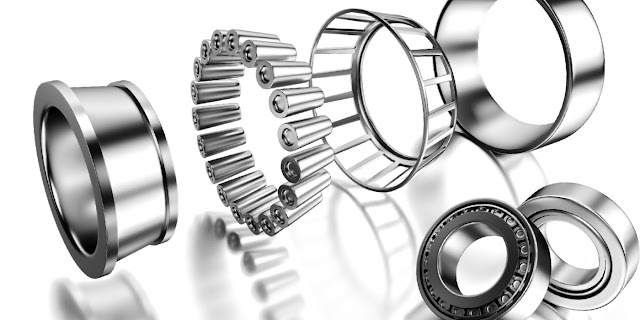Industry equipment consists of several components that work together to make it functional. One of the major components that you can find in this equipment includes bearing.
Bearings are small circular elements that you can use in most engine bearing manufacturing process. Based on different requirements and needs they are different types of bearings. Most of these bearings can be used to reduce the friction between two parts in contact.
Below are the different kinds of bearing;
Ball Bearings
Ball Bearings is the most common type of bearing that you can find in most industrial equipment. This bearing consists of metal balls. Ball-bearing, when used, provides a lot of advantages to the equipment like less resistance, handling high loads, long life, and many others.
Roller Bearings
These are cylindrical rolling elements that are found between different parts of the pieces of equipment. The roller bearings are of various types. Each roller bearing differs depending on the type of equipment, service condition, kind of loading, and many other factors. With roller bearing, you can gain many benefits like low friction, great accuracy, low vibration, easy maintenance, handling high radial loads, and many other benefits.
Linear Bearing
It is a bearing with rolled and ball elements used to provide linear motion. You can use linear bearing in equipment or machine-like 3D printers, sliding doors, and many others. They will reduce friction between two components and provide linear motion and other benefits.
Jewel Bearings
It is a bearing that is like a small shaft. Jewel bearings are used in small devices like meters, watches, and many others. These are kinds of bearings made from specific materials, and they give precise results than other bearings.
Fluid Bearings
It is a special type of bearing that is used explicitly on pressurized liquid equipment to eliminate friction. You can use Fluid Bearings where other bearings like metallic bearings cannot work best.
Cylindrical Bearings
Cylindrical bearings are types of bearings that offer higher strength. They are most suitable for high-speed applications or machines. They are good at reducing heat generation, noise and are good at handling heavy loads.
Needle Roller Bearings
They are bearings that have a longer length than their diameter. Needle Roller Bearings are mainly classified as either thrust or radial based on the direction that is going to be placed between two components.
Tapered Roller Bearings
These are the bearings that you can use for high axial or radial loads in a given direction. Their strength also varies based on the material used during manufacturing. They are primarily for reducing heat generation and wear out.
Spherical Roller Bearings
These are rolling elements that allow rotation with low friction and allow angular misalignment. They are mainly used to support rotating shafts with respect to the inner and outer ring. Despite their name, they are not spherical. However, their rolling elements can be cylindrical.
Deep-Groove Ball Bearings
You can use Deep-Groove Ball Bearings in many industries due to their ability to adapt to many pieces of equipment. They can optimize the noise, vibration, friction, and other things once used in engine bearing manufacturing process. They are available in different sizes, designs, and variants.
Angular Contact Ball Bearings
These bearings have outer and inner rings that are relative to each other in a given direction. They accommodate both the axial and radial loads.
Self-Aligning Ball Bearings
They have two rows consisting of balls. Some of these bearings are open, while others are sealed. Self-Aligning Ball Bearings are insensitive to shaft misalignment. Therefore, they are suitable for applications where misalignment might occur due to shaft deflection.
Thrust Ball Bearings
Thrust Ball Bearings are a bearing that you can use for axial loads. There are two forms of thrust ball bearing: those that work in a single direction and those that work in a double direction. Therefore are helpful when it comes to preventing the shaft from drifting when transferring thrust loads.
Conclusion
The above are the types of bearing that you can use in different engine bearing manufacturing processes. Note that these types work best in a given work or application while others have different designs making them versatile, and you can use them in various applications.

Comments
Post a Comment